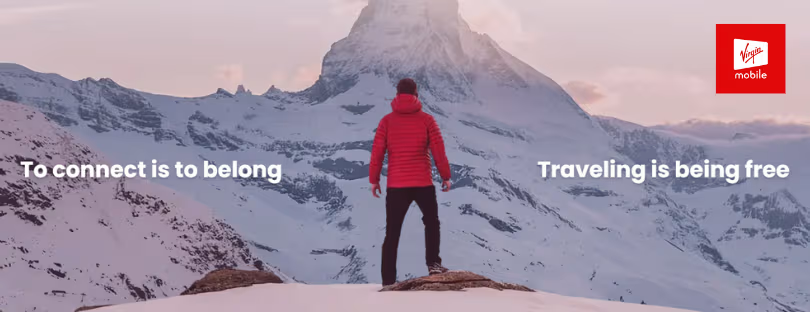
When Airlines Sell eSIMs: Smart Upsell or Just Another Fee?
You’ve made it through baggage fees, seat selection charges, and the “premium boarding” that feels… not so premium. Just when you think airlines couldn’t possibly squeeze anything else into your booking flow, surprise—they’re now offering eSIM ‘s. Yep, Ryanair, Wizz Air, Emirates, Discover Airlines, Alaska Airlines, and a growing list of airlines are suddenly in the digital connectivity game. airline eSIM
But is this new feature actually useful for travelers? Or is it just one more way airlines are monetizing your journey? Let’s talk about it.
Wait, airlines sell eSIMs now?
If you’ve flown recently and poked around the airline’s app or got one of those “Don’t forget before you fly!” emails, you might have noticed something new: travel eSIMs. A quick tap promises instant mobile data for your destination—no SIM swap, no searching for airport kiosks.
Ryanair, never one to miss a revenue opportunity, now pushes eSIMs alongside insurance and scratch cards. Wizz Air follows a similar model. Emirates, on the other hand, partners with providers like Deutsche Telekom to offer regional plans through its app and in-flight Wi-Fi portal.
On the surface, it sounds like a win for travelers. Seamless mobile data the moment you land? That’s gold when you’re trying to order an Uber or check into your Airbnb. But the reality is a little more complicated.
What Do These Airline eSIMs Cost?
Let’s get to the juicy part — pricing.
Ryanair eSIM via Tripsim
- Example: 1 GB for 7 days in Europe costs around €6.99
- No app required—QR code via email
- Ryanair partnered with Tripsim, a travel eSIM reseller
Wizz Air eSIM via eSIMGo
- Example: 3 GB for 15 days in Europe: €11.99
- Easy to install, but limited plan choices
- WizzAir eSIM is powered by eSIMGo
Emirates eSIM via Deutsche Telekom
- Example: 1 GB in the EU for €9.90, or 5 GB for €24.90
- High-quality networks, but a bit pricey
- Emirates eSIM is integrated into the Wi-Fi service during the flight
So, how do these stack up to standalone eSIM providers like Airalo, Airhub, or aloSIM?
Airhub example
- 4GB for 30 Days in Europe = €5.50
- Airalo often includes multiple operators for better coverage, and voice services are available.
- Promo offers are frequently available
Airalo example
- Airalo Europe Regional Plan: 1 GB / 7 Days = $4.50 (~€4.15)
- Airalo Global Plan: 3 GB / 30 Days = $24 (~€21)
Roamless example
- Europe Regional Plan: 1 GB / 7 Days = $4.95 (~€4.40)
- App-based setup — ideal for frequent travelers
- Roamless currently offers international calls from inside the app, and will soon offer messaging and local number capabilities
In most cases, standalone eSIMs are cheaper and offer more flexibility in terms of providers, countries covered, and validity. Airline eSIMs, while convenient, usually carry a premium price tag.
Why Are Airlines Getting Into eSIMs?
Simple: digital real estate = revenue.
Airlines already know that many travelers need mobile data when they land. So instead of letting you go hunt down a SIM or install Airalo, they jump in and offer it themselves — often through partnerships with white-label eSIM providers. They don’t have to build anything themselves; they just plug in an offer, slap their brand on it, and take a cut.
It’s the same logic behind selling insurance, car rentals, hotel bookings, or even train tickets. The digital booking flow is valuable space — and eSIMs are the next frontier.
Is It Actually Useful?
Let’s be fair: there is value here, especially for casual travelers or those unfamiliar with eSIMs.
- Convenience: One click, no research.
- Timing: Airlines offer it right when you’re planning your trip — when you’re open to buying.
- Trust: Many people feel more secure buying through a familiar airline brand than an unknown app.
- No app overload: If you don’t want to install yet another app for a one-time trip, this works.
So for someone flying once or twice a year, who just wants a small data pack and doesn’t care about saving a few euros — this could be a great option.
But for digital nomads, frequent travelers, or budget-conscious explorers? You’ll want to look elsewhere.
The Catch: Limited Plans and Hidden Fees
Most airline eSIM offers come with limited data packs — often 1GB or 3GB, short validity periods (7-15 days), and no top-up options. That’s fine for a weekend trip, but not for a long journey or business travel.
And some have non-obvious terms. For example:
- Data throttling after a certain usage
- No SMS or calling capabilities (data-only)
- Limited or no customer support once you’ve activated
In contrast, independent eSIM providers often give you:
- Top-ups or plan extensions
- Regional or global options
- Ability to choose the network manually
- Better data bundles for the same price or less
Plus, when you buy directly, you’re not paying the airline’s markup.
A Smarter Approach for Travelers
If you want the best of both worlds, here’s a tip:
- Compare the offer: If Ryanair or Wizz throws an eSIM into your checkout flow, take a screenshot and check the price.
- Hop on Airalo, Airhub, aloSIM, or Nomad: See if you can get the same or better data for less.
- Install before you go: If possible, download and activate your eSIM before flying — no airport Wi-Fi drama.
There’s nothing wrong with airline eSIMs if you’re short on time or overwhelmed by options. But with just 2 extra minutes, you can often save money, get more data, and have a better network.
Final Verdict: Smart Upsell and Just Another Fee
So, are airline eSIMs a smart upsell or just another nickel-and-dime tactic?
Honestly… It’s both.
They’re smart because they meet a real traveler’s need and offer one-click convenience. But let’s not pretend this is purely altruistic. Airlines are monetizing digital space with marked-up products, just like they do with everything from coffee to carry-ons.
If you know your way around travel tech, stick with independent eSIMs for better value. But if you’re the type who buys travel insurance just to make the booking page stop asking, maybe this is a small price to pay for peace of mind.
Just don’t forget to turn roaming off. That’s still a thing.
Over to you: Have you ever bought an airline eSIM? Did it work as expected, or did you switch back to your favorite eSIM app? Share your story in the comments or tag us on social media!










